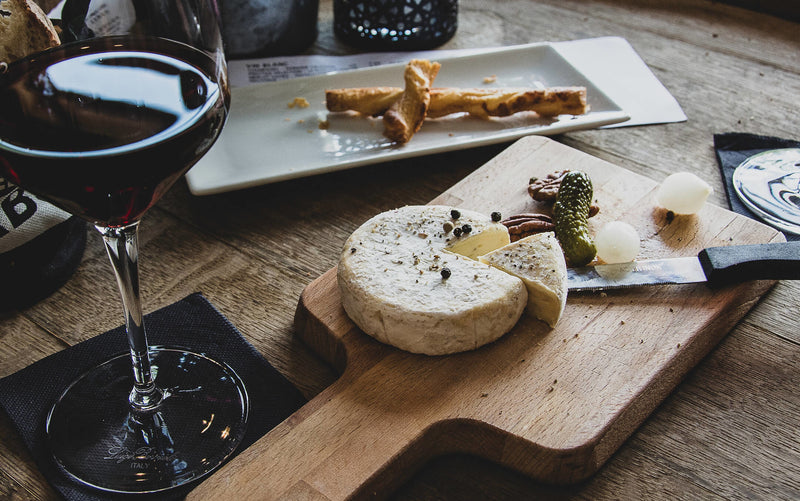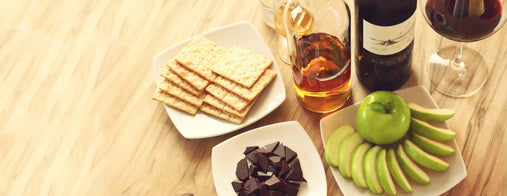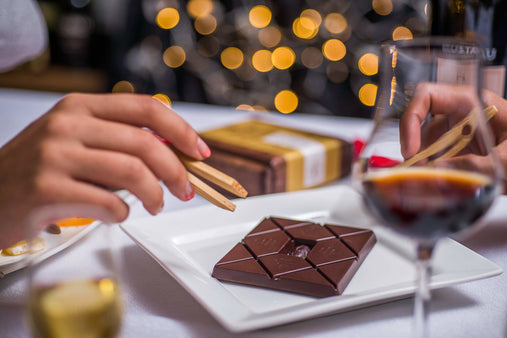
19th of July 2022
Do you love ketchup with your fries? Jams with your cheeses? Peanut butter with your chocolate? Are you actually getting the best of both foods when you pair them? Or let’s just get to the question you’re all wondering: Should I really be pairing chocolate with wine?
A successful food pairing is achieved when the combination of two or more ingredients gives a greater sensorial experience than any of those ingredients on their own. Our eating preferences are heavily influenced by childhood memories, cultural backgrounds, daily habits, and personal income. However, there are some food combinations that always work despite all these variables. Think of fresh strawberries dipped in dark chocolate or chocolate-covered nuts and seeds.
Chefs, bartenders, bakers, sommeliers, and all kinds of food and drink professionals spend their entire careers perfecting the art of food pairing. The goal is to deliver unforgettable experiences to the palates of their demanding customers. But anyone can enjoy a good food pairing by applying some basic principles around tastes, aromas, and textures. Here’s a quick look at the art and science of food pairing.

Understanding Flavor Profiles
Before matching different foods and drinks, you have to learn each of their flavor profiles. If we don’t know the taste, aromas, mouthfeel, and texture of a specific food, it will be hard to find a good match for it.
For each food you want to pair, you must first identify the taste, aromas, mouthfeel, and texture.
1. Taste. Humans are capable of identifying five basic tastes:
- Sweet
- Sour
- Bitter
- Salty
- Umami
2. Aromas. Around 80% of our flavor experience is determined by our sense of smell. Our olfactory system enables us to distinguish up to 1 trillion different odorant molecules associated with fragrances and aromas. Some examples of aromas include:
- Floral
- Fruity
- Nutty
- Spicy
- Earthy
3. Mouthfeel. The foods we eat have physical effects on our mouths, giving us different sensations that span the following:
- Pungent
- Fatty
- Astringent
- Numb
4. Texture. There are dozens of different textures that we can experience in a food, including:
- Soft
- Crunchy
- Crispy
- Watery
- Creamy
- Chewy
After identifying the flavor profile of each food and drink you wish to pair, you’ll want to apply the basic principles of food pairing for best results.
Basic Principles of Food Pairing
The science of food pairing comes down to this: Dishes that lack texture and flavor variety can become boring after just a couple of bites, but those that include a variety of aromas, textures, and tastes will offer a more satisfying experience.
Foodpairing®, the Flavor Intelligence Company and a true authority on food combining, suggests following the next three steps:
1. Find foods with similar aromas. Foods and drinks need to share key aroma components, otherwise they won’t go well together. Cherry and asparagus, for example, are a perfect pairing because they both share similar floral and green aromas. Chocolate, caramel, and coffee all contain roasted, caramellic, and nutty notes.
2. Incorporate at least two contrasting tastes. To add depth of flavor, choose contrasting tastes like salty and sweet, bitter and salty, or sweet and sour.
3. Include two or more contrasting textures. Different textures can offer a multidimensional bite. On top of that, all the mouthfeels combined should go well together. For example, astringent foods and drinks (like red wine and dark chocolate) pair well with greasy foods (like cheese and meat).
To sum it up, look for complementary aromas, balanced mouthfeels, and contrasting tastes and textures. Now, let’s apply this knowledge to pairing chocolate.

The Best Dark Chocolate Pairings
Chocolate that is made with fine flavor cacao already delivers an enchanting set of flavors. But you can maximize the fun by pairing it with other foods and drinks to see how the aromatic profile of the chocolate behaves in different scenarios.
To start, taste the chocolate and the potential paired food or drink separately. Take note of how they taste on their own before you combine them.
Fine-flavor dark chocolate is especially versatile when it comes to food pairings. Because of its aromatic complexity given by the natural aromas in fine cacao, it’s a welcoming food that offers pairing combinations with pretty much anything you put in front of it. For example:
Pairing Chocolate With Wine
Pairing wine and chocolate is a classic combination—but it doesn’t mean any glass of wine will do. Dark chocolate tends to go best with fortified and sweet dessert wines, not red wines, which can result in a clash of tannins that isn’t pleasant in the mouth.
That said, there are many pairing possibilities when it comes to chocolate and wine. Try pairing different kinds of single-origin chocolate with different grape varieties and harvest years to experience subtle yet distinct sensorial experiences.
RECOMMENDATION: Try the Rain Harvest 2021 dark chocolate with a sweet dessert wine like Port or Sauternes.

Pairing Chocolate With Spirits
The natural flavors of cacao pair well with spirits like whisky, cognac, rum, tequila, brandy, and mezcal. The chocolate confers aromatic complexity while toning down and diluting the alcohol content at the same time.
This is why some craft bean-to-bar makers age their fine chocolate in barrels of specialty whisky, tequila, bourbon, and rum for several months. The chocolate can absorb all the flavor nuances of the chosen spirit and develop an even more complex aromatic profile.
RECOMMENDATION: Try the Ecuadorian Rum Cask Aged with Flor de Caña and other aged rums, or any spirit with vanilla and caramel notes, like añejo tequila, Irish whisky, or Blanton's bourbon.

Pairing Chocolate With Tea
The comforting warmth of tea is ideal for melting chocolate in your mouth while revealing the best flavors of both worlds. If we choose fine bean-to-bar chocolate, we should demand the same high quality also from our tea selection.
The best teas to pair with dark chocolate are Oolongs, Pu’ers and black teas. Dark chocolate with floral notes can be combined with Jade Oolong for a refreshing herbal taste, while cacao origins known for their nutty notes pair well with black Keemun tea.
RECOMMENDATION: Try the Pu’er Tea Aged with Pu’er tea, of course!

Pairing Chocolate With Cheese
It may sound like a weird combination, but soft and semi-soft cheeses like Gruyère, Gouda, and Brie pair incredibly well with chocolate (better than hard cheeses). Consider buying your cheese from a cheese counter, so you can ask questions about pairings and get helpful suggestions.
RECOMMENDATION: Try the Kampot Pepper Aged with a Gruyère, Compté, aged Gouda, or Pyrenees sheep cheese.
Most Popular Chocolate Pairings
Fruits, nuts and seeds are chocolate pairings that never go out of style. Combined with chocolate, they also offer a boost of healthy fats, vitamins, and proteins.
RECOMMENDATION: Try the Rain Harvest 2018 (100%) with a handful of macadamia nuts.

Unusual Chocolate Pairings
If you are brave enough, you can venture into salty and savory pairings that push the boundaries of taste. Consider adding cacao powder to savory dishes or pairing chocolate with specialty olive oils, popular spices, or fermented and cured foods.
If you have never added clove and nutmeg in your hot chocolate, you are missing out! Lately, many foodies are loving dark chocolate with beef jerky. Or you can challenge your cooking skills with traditional cacao recipes such as Mexican mole sauce.
RECOMMENDATION: Try any of these 7 creative recipes for DIY hot chocolate, featuring herbs, spices, fruits, and nuts.
First Step to Food Pairing: Train Your Palate
To become a master in chocolate pairing, it’s important to know how to really taste dark chocolate and become a mindful eater. The wider the variety of foods and drinks you experience in your daily life, the better you’ll be able to find the perfect chocolate pairings. Take every meal as an opportunity to train your senses and taste different types of chocolate often — not only to enjoy but to deepen your knowledge of all of chocolate’s flavor and pairing potential.
With its infinite aromatic variations, chocolate is one of the most versatile treats to experiment with when it comes to food and drink pairing. To start, here are some of my favorite chocolate pairings:
- 80% dark chocolate with Oolong tea
- 100% cacao with Macadamia nuts
- Hot chocolate with ginger, nutmeg and clove


